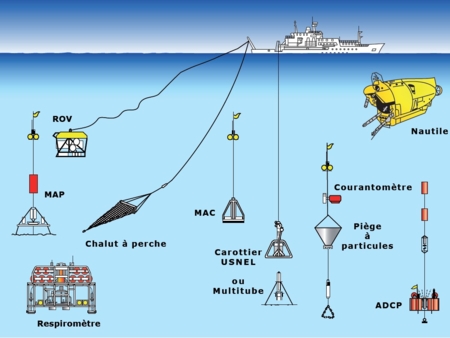Diversity of thermophilic micr obial populati ons from a deep sea hy drothermal chimney: enrichment cultures in bioreactor and isolation of new species
Active hydrothermal chimney and sediments of the Guaymas Basin (Mexico) host various microbial communities with different metabolisms, including those involved in biogeochemical cycles of sulfur and iron. It is established that, in these dynamic ecosystems, microbial activity depends on the availability of substrates in their environment and that prokaryotes could, in return locally affect the composition of the hydrothermal fluid and mineralogical composition of the chimney or sediment, by mediating the dissolution and / or precipitation of some mineral phases. In order to study these prokaryotes‐biotope interactions, and establish links between the structure, the activity and the isotopic signatures of microbial communities with the physico‐chemical characteristics of hydrothermal systems of Guaymas Basin, a multidisciplinary approach based on the implementation of microbiology, geochemistry and isotope technics was performed using enrichment cultures in bioreactors and the study of the colonization of basaltic substrates. This work led to: 1) characterize the diversity of microorganisms in different hydrothermal compartments (chimney and sediments) of the Guaymas Basin using both cultural and molecular approaches; 2) to decrypt the functioning of sulfur and iron biogeochemical cycles, by highlighting the occurrence, at high temperature and anaerobic condition, of sulfur‐reducing, sulfate‐reducing, sulfur‐oxidizing and also iron‐reducing and ironoxidizing prokaryotes ; and 3) to better understand the prokaryote‐mineral‐fluid interactions by pointing out the role of microorganisms in environmental condition changes, mineral precipitation and their direct or indirect role in iron and sulfur isotope fractionation. Thus these studies have demonstrated the importance of the cross‐interactions between the different hydrothermal components: microbial communities, fluids (hydrothermal fluid, sediment pore water, sea water) and mineral structures.







